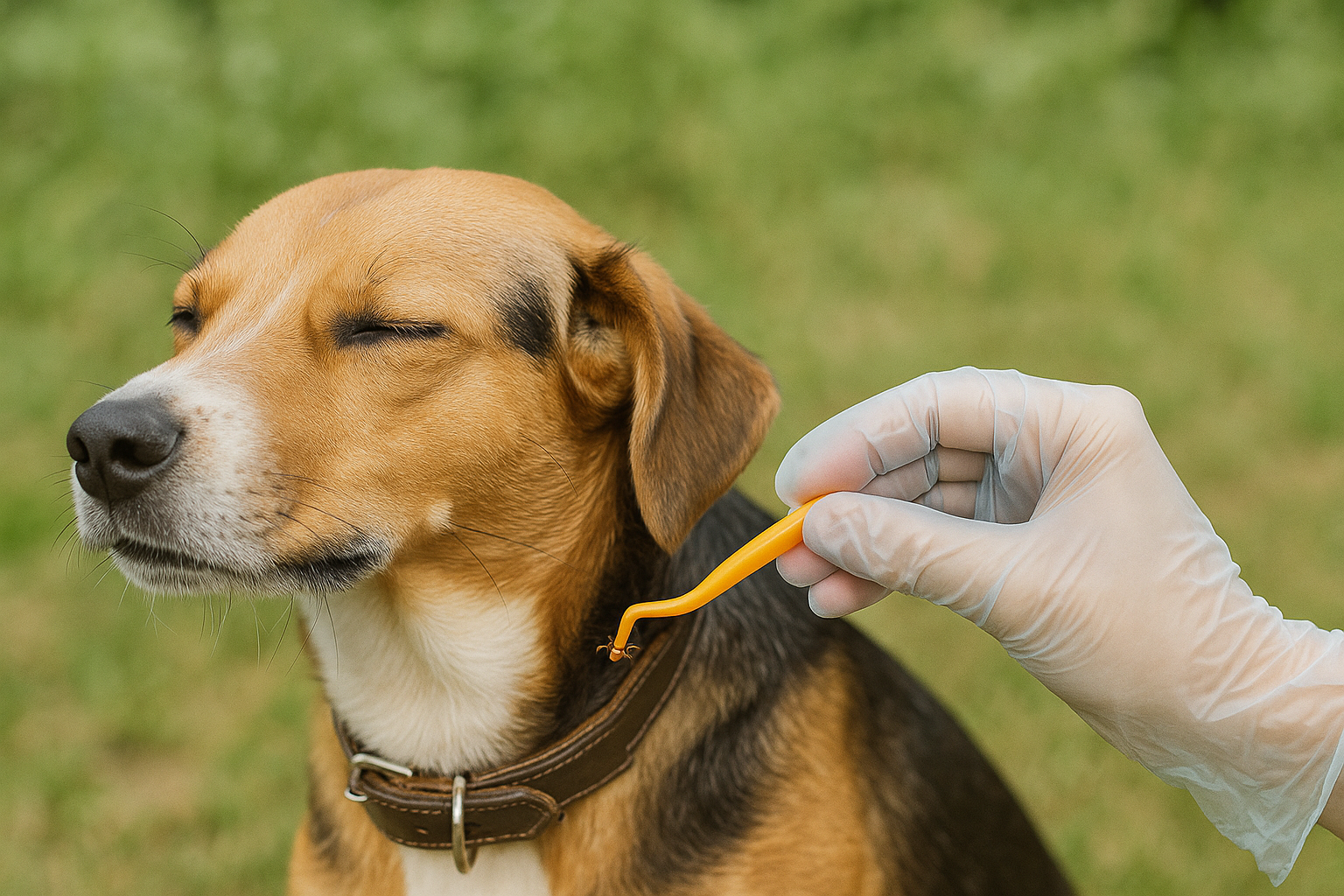 Did you know removing a tick the wrong way can actually cause harm to your dog?
Did you know removing a tick the wrong way can actually cause harm to your dog?If you find a tick on your pet, don’t panic. With the right tools and a calm approach, you can remove it safely. If you’re unsure or uncomfortable, your veterinarian is always available to help.
✅ Tools You’ll Need
Having the right supplies makes tick removal safer and easier:
-
Rubber gloves – Protects you, since ticks can spread diseases to people.
-
Tick removal tool (best option) or fine-point tweezers – Designed to remove ticks without squeezing them.
-
Rubbing alcohol (preferred) or pet-safe antiseptic cleanser – To disinfect the area before and after.
-
A small jar or sealed container – To store the tick in case your veterinarian needs to identify or test it.
📝 Step-by-Step Tick Removal
-
Put on gloves – Safety first!
-
Clean the area – Sterilize your tool with rubbing alcohol. Part your dog’s hair and disinfect the tick site.
-
For sensitive areas (around the eyes/nose), use pet-safe cleanser or warm, soapy water. Protect eyes with artificial tears ointment if working nearby.
-
-
Position your tool – Grab the tick as close to your dog’s skin as possible, aiming for the head (not the body).
-
Pull straight up – Firmly but slowly remove the tick without twisting or squeezing.
-
Check the tick – Make sure the head and mouthparts are intact.
-
Store it safely – Place the tick in a sealed container with rubbing alcohol. This allows you to show your veterinarian if needed.
-
Disinfect again – Clean your dog’s skin one more time.
-
Watch your dog closely – Monitor for signs of illness over the next few weeks.
🚨 Watch for Warning Signs
Contact your veterinarian if you notice any of the following after a tick bite:
-
Fever
-
Swollen joints or lameness
-
Vomiting or diarrhea
-
Tiredness or loss of appetite
-
Swollen lymph nodes
-
Seizures or unusual reflexes
-
Red/brown urine, bruising, or bleeding issues
-
Weight loss
🐶 What if the Tick Head Stays In?
Sometimes the body detaches, leaving the head stuck in the skin. Try using fine-point tweezers to gently remove it. If you can’t, don’t dig—call your veterinarian.
🛡️ Why Proper Removal Matters
Ticks can carry dangerous diseases. If squeezed or removed incorrectly, they may release harmful bacteria into your dog’s bloodstream.
🐕 Tick Prevention Tips
The best protection is prevention:
-
Keep your dog on year-round flea, tick, and heartworm preventatives.
-
Ask your veterinarian if a Lyme disease vaccine is appropriate for your dog.
-
Remember, even indoor dogs can be exposed to ticks brought in from outside.
👉 By following these steps and keeping up with preventatives, you’ll keep your dog safer and healthier!
